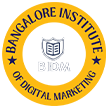
In today’s competitive online environment, businesses cannot afford to operate without a solid digital marketing strategy. A Digital Marketing strategy is more than posting on social media or running ads—it’s a comprehensive plan that aligns business goals with online efforts. Companies with clear digital strategies often see higher ROI, stronger brand recognition, and better customer engagement.
Table of Contents
Understanding the Basics of Digital Marketing
Digital marketing encompasses all marketing efforts using digital channels. This includes:
- Website and SEO – Ensuring your website is discoverable by search engines.
- Content Marketing – Creating valuable content to attract and engage audiences.
- Social Media Marketing – Leveraging platforms like Facebook, Instagram, LinkedIn.
- Email Marketing – Building relationships through targeted campaigns.
- Paid Advertising – PPC, Google Ads, social media ads, retargeting campaigns.
Understanding these basics is crucial before building a strategy.

Setting Clear Goals and Objectives
Before executing any campaign, define SMART goals:
- Specific – Clearly define what you want to achieve (e.g., increase website traffic by 30%).
- Measurable – Ensure you can track progress with KPIs.
- Achievable – Set realistic targets.
- Relevant – Align goals with business objectives.
- Time-bound – Set deadlines to maintain accountability.
Examples of common goals:
- Increase website traffic
- Improve lead generation
- Boost social media engagement
- Enhance brand awareness
Identifying Your Target Audience
A strategy fails without understanding your audience. Create buyer personas by considering:
- Demographics: age, gender, location
- Psychographics: interests, values, lifestyle
- Online behavior: social media platforms, preferred content types
- Pain points and challenges
Tools like Google Analytics, Facebook Insights, and SEMrush can help gather this data.
Competitor Analysis
Analyze your competitors to identify opportunities and threats:
- What channels are they using?
- What type of content performs best?
- Which keywords are they ranking for?
- How do they engage their audience?
Use tools like Ahrefs, SEMrush, and SimilarWeb for in-depth analysis.
Choosing the Right Digital Marketing Channels
Not all channels are suitable for every business. Common channels include:
- Organic Search (SEO) – Long-term growth
- Social Media – Brand awareness and engagement
- Email Marketing – Lead nurturing and conversions
- Paid Ads – Immediate traffic and sales
- Influencer Marketing – Leveraging third-party credibility
Focus on channels where your audience is most active.
Crafting Your Brand Message
Your brand message communicates your value proposition. It should be:
- Clear and concise
- Relevant to your target audience
- Consistent across all channels
- Aligned with your business mission
A strong message differentiates you from competitors and builds trust.
Content Marketing Strategy
Content is the backbone of digital marketing. Include:
- Blog posts – SEO-friendly, informative, and engaging
- Videos – Tutorials, testimonials, product demos
- Infographics – Visual representation of data
- E-books & Whitepapers – Lead generation tools
- Podcasts – Build thought leadership
Content Tips:
- Use keyword research for every piece.
- Optimize headlines, meta descriptions, and images.
- Include internal and external links for authority.
SEO Strategy: Organic Growth for Your Website
SEO improves visibility on search engines. Key elements:
- On-page SEO: meta tags, keywords, headings, URL structure
- Off-page SEO: backlinks, guest posting, influencer mentions
- Technical SEO: site speed, mobile optimization, schema markup
- Local SEO: Google My Business, local citations
Regularly update content to maintain rankings and relevance.
Social Media Marketing Strategy
Social media connects your brand to audiences. Steps:
- Choose the right platforms (Instagram, LinkedIn, Twitter, TikTok)
- Create a content calendar
- Engage with followers actively
- Use social media analytics to measure performance
- Run targeted campaigns to drive traffic or leads
Pro Tip: Visual storytelling and user-generated content increase engagement.
Email Marketing Strategy
Email marketing is one of the highest ROI channels. Best practices:
- Segment your email lists based on behavior and preferences
- Personalize subject lines and content
- Include CTAs for conversions
- Automate campaigns for nurturing leads
- Test campaigns with A/B testing
Paid Advertising Strategy (PPC, Display, Retargeting)
Paid ads provide quick results. Types include:
- Google Ads (Search & Display) – Capture high-intent traffic
- Social Media Ads – Facebook, Instagram, LinkedIn
- Retargeting Ads – Re-engage visitors who didn’t convert
Monitor ROI closely and adjust targeting, bidding, and creatives.
Influencer and Affiliate Marketing
Partnering with trusted voices can amplify reach:
- Influencers – Collaborate with individuals with strong online presence
- Affiliate marketing – Encourage affiliates to promote products/services for commission
Track performance using affiliate links and analytics dashboards.
Marketing Automation and Tools
Automation saves time and increases efficiency:
- HubSpot, Mailchimp, ActiveCampaign – Email automation
- Hootsuite, Buffer, Sprout Social – Social media scheduling
- SEMRush, Ahrefs – SEO tracking
- Google Analytics & Data Studio – Performance measurement
Choose tools based on your budget and business needs.
Budgeting and Resource Allocation
Allocate budget according to goals and channels:
- Paid ads
- Content creation
- Tools and software
- Outsourcing vs in-house resources
Track ROI for each channel to optimize spending.
Tracking, Analytics, and KPIs
Measure success with metrics:
- Website traffic and sessions
- Conversion rates
- Cost per lead (CPL)
- Customer acquisition cost (CAC)
- Social media engagement
- Email open and click-through rates
Use Google Analytics, Facebook Insights, SEMrush for accurate reporting.
Adjusting and Optimizing Your Strategy
Digital marketing is iterative. Steps to optimize:
- Analyze results monthly
- Identify high-performing and underperforming areas
- Adjust campaigns and content accordingly
- Test new ideas continuously
Case Studies of Successful Digital Marketing Strategies
Example 1: HubSpot’s inbound marketing strategy grew their lead generation by 70% using content and email campaigns.
Example 2: Airbnb leveraged social media storytelling and influencer marketing to expand globally.
Example 3: Shopify used SEO and community-building to dominate the e-commerce platform niche.
Learn from these examples to refine your strategy.
Future Trends in Digital Marketing
Stay ahead with emerging trends:
- AI and ChatGPT-powered marketing
- Voice search optimization
- Video-first content marketing
- Hyper-personalization with data analytics
- Sustainability and ethical marketing
Adapting to trends ensures long-term growth.
Conclusion
Building a digital marketing strategy is a step-by-step process that aligns business goals with online efforts. Key takeaways:
- Set clear, measurable objectives
- Know your audience and competitors
- Choose the right channels and craft compelling content
- Measure, analyze, and optimize continuously
A well-executed digital marketing strategy ensures better ROI, higher engagement, and sustainable growth for your business.



